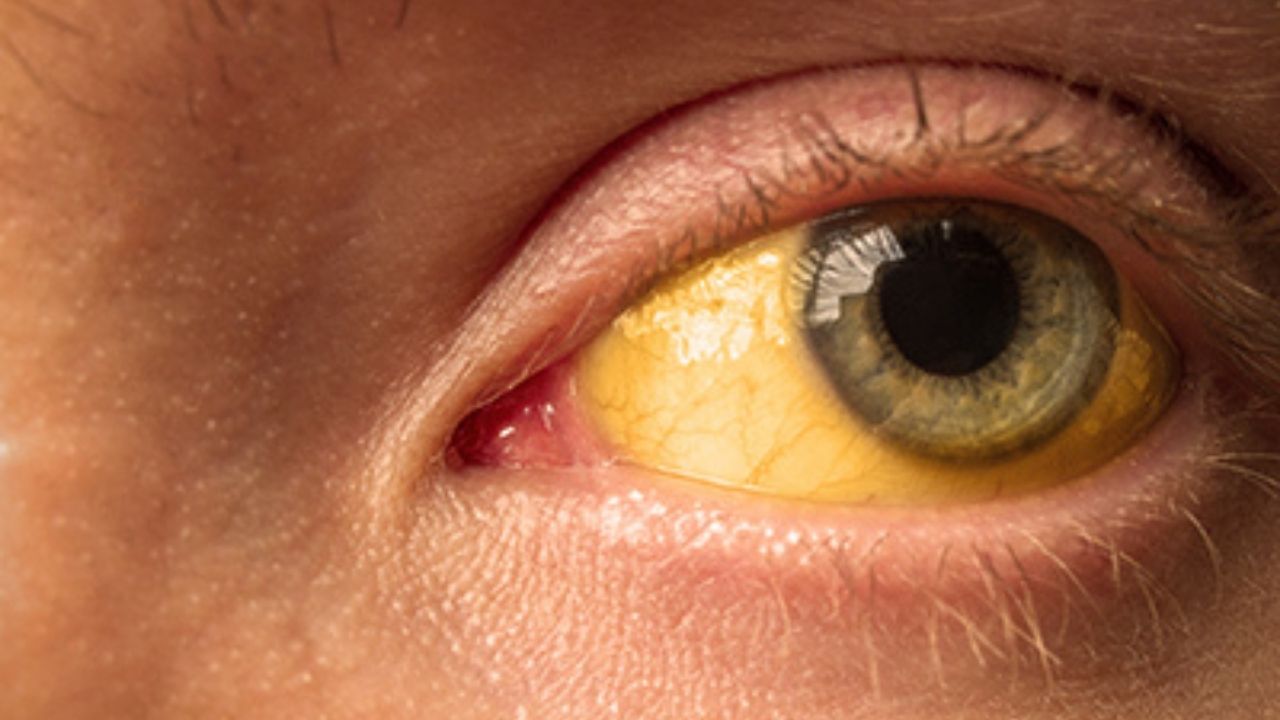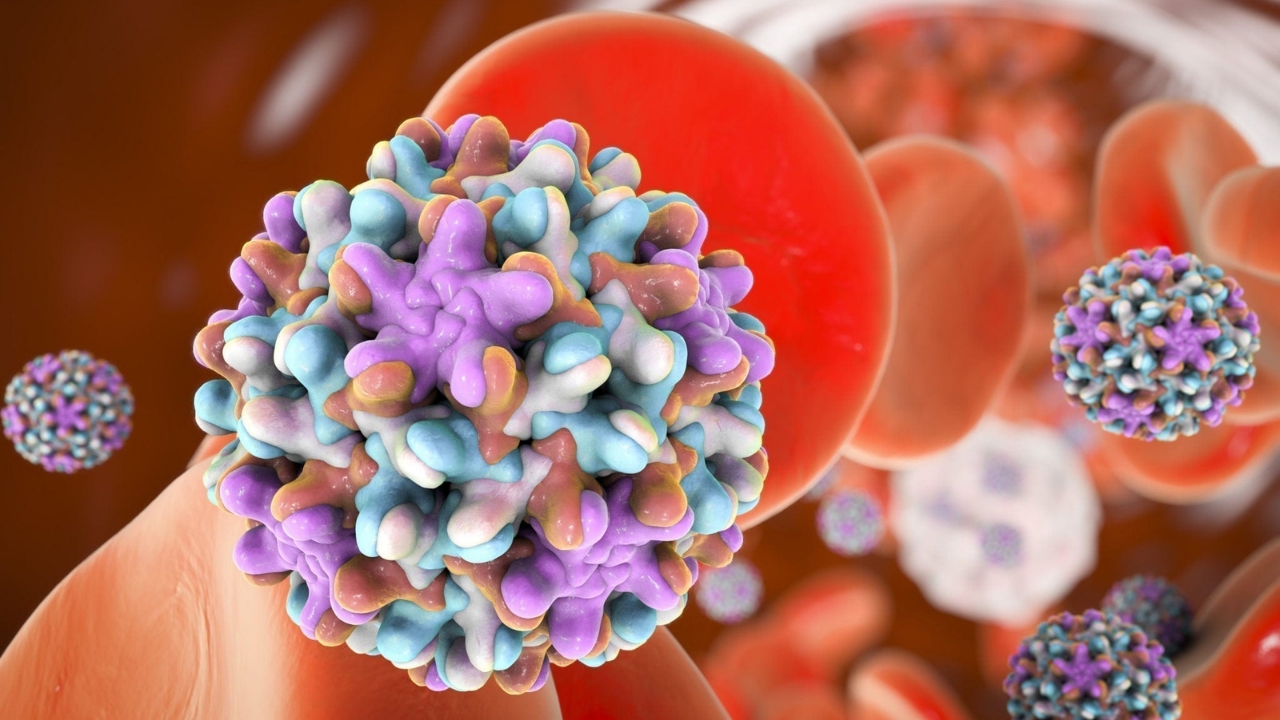
What is hepatitis B?
Hepatitis B is an inflammation of the liver caused by the HBV virus, usually acute in nature, although it becomes chronic in some cases. It is one of the most common and widespread infectious diseases in the world. In fact, according to the World Health Organization (WHO) , some 257 million people were chronically infected with the hepatitis B virus in 2015, while 1.1 million people were infected in 2017.
The virus that causes it is concentrated mainly in the blood, but it is also present in other fluids or body fluids such as saliva, semen, vaginal secretions and urine.
Hepatitis B can cause death, either in its acute form due to the development of acute liver failure (rare), or in the long term, due to complications of its chronic form, such as cirrhosis and liver cancer.
What is its prevalence?
According to the Spanish Association of Gastroenterology and Hepatology (AEGASTRO), the prevalence of this pathology in developed countries has been reduced thanks to universal vaccination and the generalization of preventive measures in the health field.
By what routes is hepatitis B transmitted?
You can get the hepatitis B virus in a number of ways. Generally, these routes involve contact with the blood of the infected person -where there is a higher concentration of the virus-, but it may also be that these transmission routes involve contact with other biological fluids (saliva, semen, vaginal secretions, urine), and this will lead to contagion.
There are basically four transmission routes:
- Vertical or perinatal : from mother to child at the time of delivery.
- Horizontal : from exposure to infected blood from prolonged or close contact with infected people (for example, from exposure to open wounds). In developing countries, where there is a high prevalence of hepatitis B, horizontal transmission among children under five years of age and transmission at childbirth are the most frequent routes of infection.
In any case, objects of daily use that are shared (razors, articles for oral hygiene) can be a source of contagion. It must be taken into account that the virus can survive outside the body for at least seven days and, therefore, contaminate these shared objects. - Parenteral : through syringes shared between injection drug addicts, in health centers for the use of blood products or through needles for tattoos, acupuncture or piercings. At present, especially in our environment, this route of contagion is less frequent, since the sterilization of medical supplies is widespread and it is not so common for people addicted to drugs to share syringes.
- Sexual : it is the most frequent way of contagion of hepatitis B in developed countries, especially for unvaccinated people who adopt risky behaviors. Its incidence can be reduced thanks to vaccination campaigns and the use of condoms.
What are symptoms of hepatitis B
The average incubation period for the hepatitis B virus is 75 days, although it can range from one month to half a year. People infected with acute hepatitis B often do not develop symptoms, but the following occasionally appear :
- Yellowish pigmentation of the skin, mucosa and eyes (jaundice).
- Dark urine (coluria).
- Extreme fatigue
- General discomfort.
- Fever.
- Sickness.
- Vomiting
- Diarrhea.
- White stools (acholia) or yellowish.
- Stomach ache.
- Mild discomfort on the right side of the abdomen.
- Joint pain
- Skin rash (in some cases)
- Extrahepatic manifestations (both in the acute and chronic forms of the disease), vasculitis, renal and dermatological involvement (in children).
These symptoms can usually last a few weeks (4-8 weeks) or even six months. After them, the infection usually disappears because the body has been able to fight it. On some rare occasions, fulminant liver failure can occur, leading to death – especially if infection with other viruses that affect the liver or the presence of a previously damaged liver coexists.

Hepatitis B can also become chronic, which occurs especially in infants and young children and in a low percentage of healthy adults. In this case, symptoms are usually absent or very mild until liver damage becomes apparent. Often, it is diagnosed accidentally when an analysis is performed for other reasons.
Over time, hepatitis B can lead to life-threatening cirrhosis or liver cancer by preventing the liver from working properly.
Also in chronic forms of hepatitis B, extrahepatic manifestations of the disease can occur, in up to 10% -20% of patients. The vessels of different organs such as the heart, kidney, digestive system, musculoskeletal system, nervous system and dermatological can be affected, by mechanisms not yet well known. Other extrahepatic manifestations such as renal involvement (glomerulonephritis) and dermatological (skin rash without itching on the face, buttocks and extremities) appear more in children.
Can hepatitis B be cured?
Generally, acute hepatitis B is not, as most healthy adults and children over age 5 suffering from this infection are cured without treatment. The objective in a case of this disease must be to achieve the well-being and an adequate nutritional balance of the patient. If necessary, rehydration measures are applied after vomiting and diarrhea. Do not take unnecessary medications and drugs such as paracetamol or antiemetics (to treat vomiting) should not be administered. Nor is strict and prolonged bed rest essential for full recovery, although less physical activity can contribute to improvement.
If a correct diet is not possible or other annoying symptoms coexist (intense itching), the medical professional may indicate other types of measures (intravenous nutrition or drugs to relieve itching).
In the event that acute hepatitis B becomes chronic, it can be treated pharmacologically with antivirals, to help slow the progression of the disease. Although they rarely cure it, they do reduce liver damage, which lowers the risk of developing cirrhosis or liver cancer. If cirrhosis already exists, treatments can help prevent decompensation, advanced liver failure, or the risk of death.
Basically, two types of drugs are used to treat hepatitis B in its acute form:
- Nucleotide analogs : slow down the HBV virus (suppress its viral replication).
- Immunomodulators : stimulate the immune system.
Some of them, the immunomodulators (interferon and peginterferon) are injectable, while the nucleotide analogs – adefovir, entecavir, lamivudine, telbivudine and tenofovir – are administered orally.
The indication for treatment based on these drugs, whose duration is variable, depends on several factors such as age, associated diseases that the patient may present or wishes for a future pregnancy, in the case of a woman. It is necessary to make the patient participate in the decision of the treatment, its advantages and disadvantages, because it will often be a long-term treatment, sometimes indefinite and with possible side effects.
In cases where severe liver damage cannot be avoided, a liver transplant may be necessary.
Tips to prevent hepatitis B
- 1. Get vaccinated.
In Spain, all newborns have been vaccinated against hepatitis B in a generalized way since 2003. If you have not received the vaccine and you are going to travel to a tropical or subtropical country, it is necessary that you request it in good time before the trip. Its effectiveness is almost one hundred percent, once the three necessary doses have been received. Vaccination is also recommended if you are a population at risk for other circumstances; ask your doctor if you can be in this group. - 2. Avoid risky sex.
Use condoms when you have sex with people other than your regular partner, as hepatitis B is present in semen, vaginal fluids, and saliva. If possible, you should also avoid having multiple sexual partners. - 3. Clean to the fullest.
Clean blood stains that may spill from a wound or other mishap using gloves and a solution of water and bleach. Also, wash your hands well with soap and water after touching or wiping blood. - 4. Don’t share hygiene items.
For example, the shaving brush, nail clipper or razor blade. Do not do it on trips either, not even with trusted people. - 5. If you get a tattoo or piercing, make sure the center complies with all preventive hygiene measures.
Sterilization of all instruments is essential.
